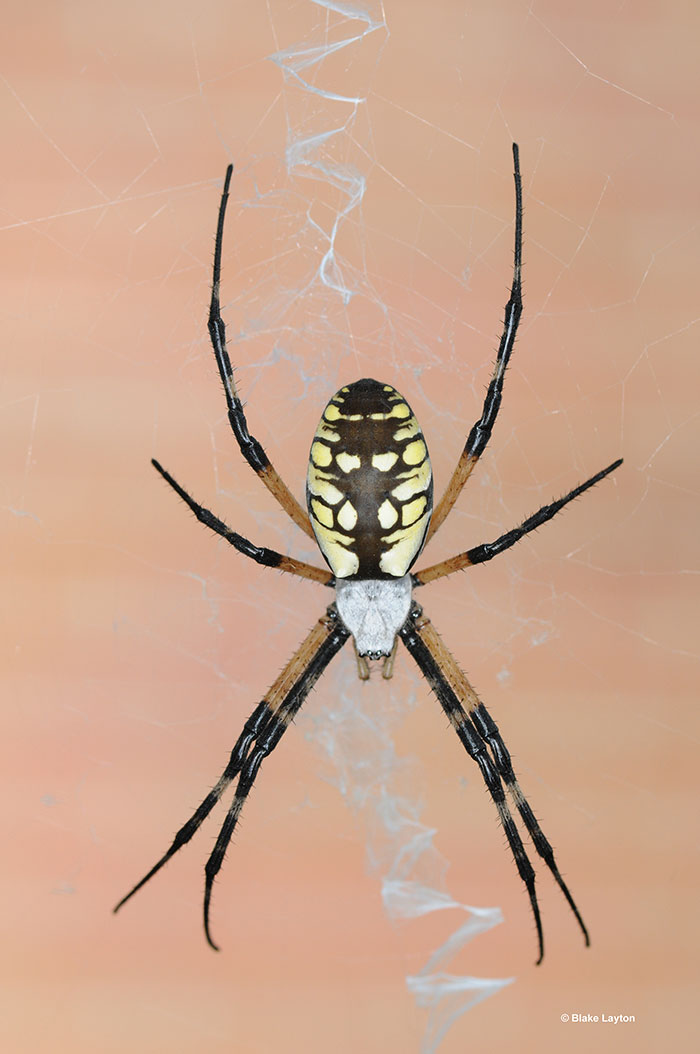Black and Yellow Garden Spider, Vol. 5, No. 31

Argiope aurantia
Order: Araneae
Family: Araneidae
These are arguably the best loved spiders in the country. Granted, spiders as a group don’t get much love, but many people who otherwise hate spiders will tolerate black and yellow garden spiders, and some gardeners feel they have missed an important part of summer if they don’t have at least one of these in their landscape.
Because they are so colorful and conspicuous, black and yellow garden spiders are known by many local names; writing spider, zipper spider, zigzag spider and golden garden spider are just a few. As young girls, my daughters called these Charlotte spiders because they believed this was the type of spider featured in the classic children’s book, Charlotte’s Web. The original Charlotte was actually a barn spider, Araneus cavaticus, but all the Charlottes in our yard were black and yellow garden spiders.
One reason these spiders are so well-known is that they occur throughout most of the country and even into southern Canada, as well as Mexico and Central America. One reason they are so often tolerated in lawns and gardens is that they tend to build their webs in out of the way corners where they are not likely to be accidentally walked through or interfere with outdoor activities. One theory for the purpose of that zipper-shaped structure they build down the center of their web is that it is to make the web more visible to birds, so they are less likely to fly through it.
Can they bite? Yes, and the bite is painful, much like a bee sting according to people who have been bitten. But it is difficult to find someone who has been bitten by a garden spider and usually they will admit they were handling the spider when it happened, often following up with a comment that this is something they had done many times before without being bitten.
When they feel threatened garden spiders will often begin to bounce back and forth on their web, causing it to oscillate back and forth. Some people find this alarming, mistakenly thinking the spider is preparing to pounce on them and attempt to bite.
Garden spiders overwinter inside large tan-colored egg sacs. A female spider may produce from one to four egg sacs, which may be up to an inch in diameter and contain more than a thousand eggs. The eggs often hatch before the onset of winter, but the spiderlings remain inside the egg sac and do not emerge until spring. Egg sacs are subject to heavy predation by birds, and parasitic wasps and flies also attack the eggs. In one study done in Washington County during the 1980s, 56% of the egg sacs examined contained such parasites.
See Bug’s Eye View No. 31 of 2017 for information on golden silk spiders, which are large orb weaver spiders that occur in the southern portion of the state and are often confused with black and yellow garden spiders: http://extension.msstate.edu/
Blake Layton, Extension Entomology Specialist, Mississippi State University Extension Service. The information given here is for educational purposes only. Always read and follow current label directions. Specific commercial products are mentioned as examples only and reference to specific products or trade names is made with the understanding that no discrimination is intended to other products that may also be suitable and appropriately labeled.
Mississippi State University is an equal opportunity institution.

